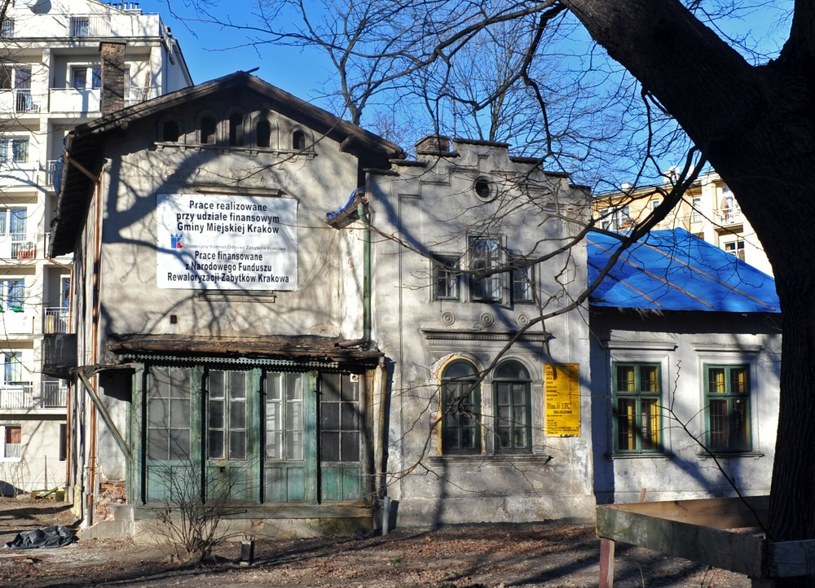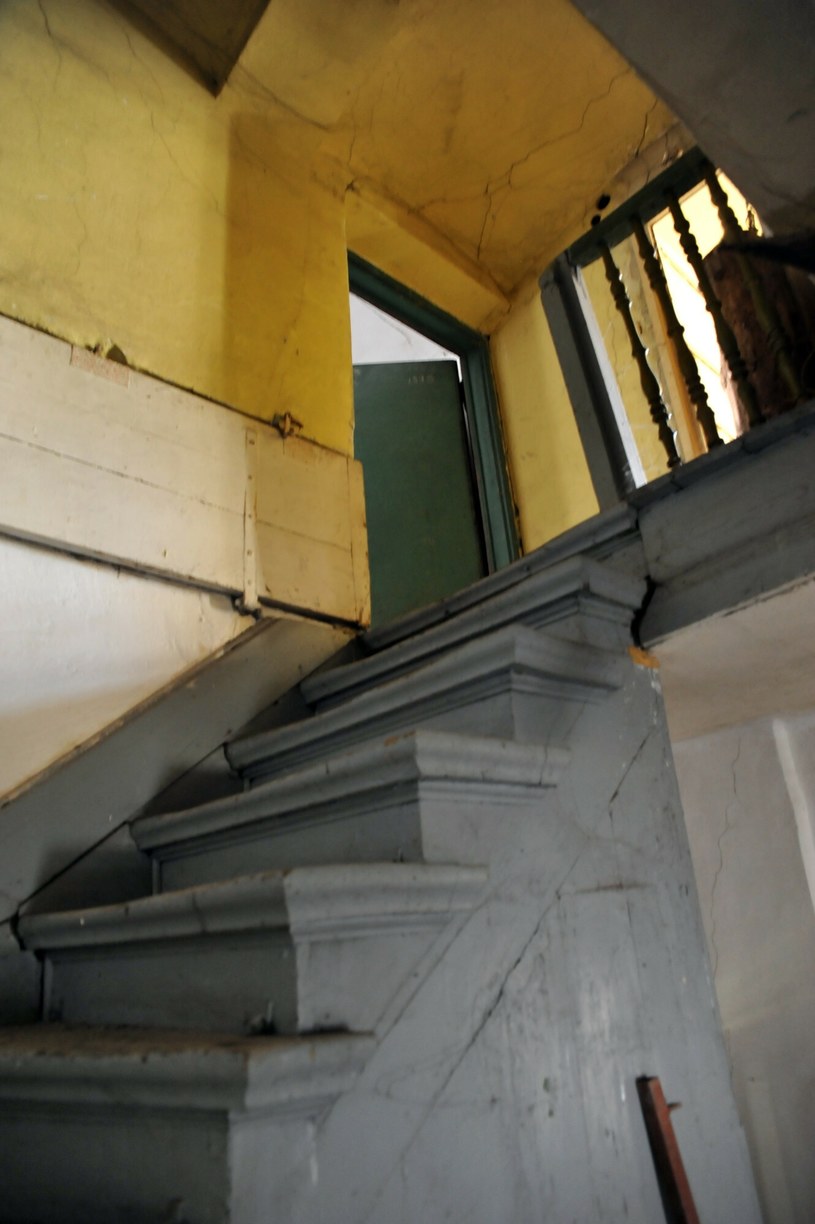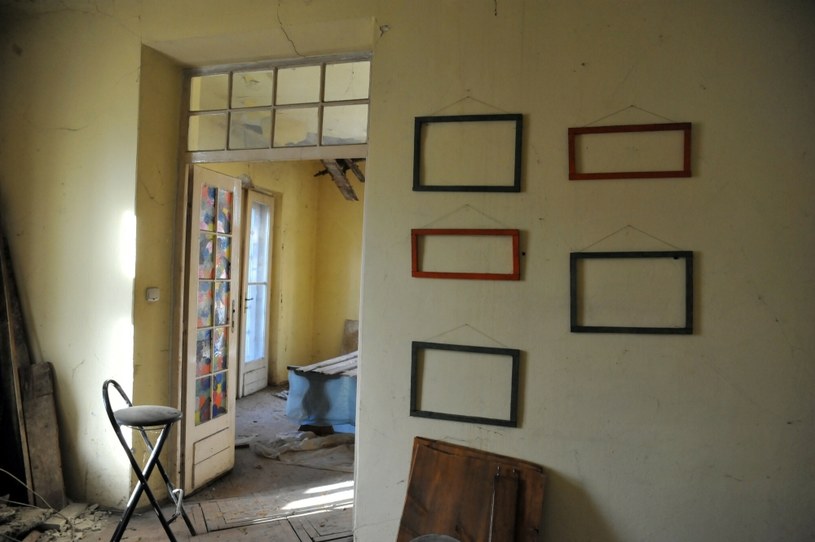The villa building and its surroundings are currently undergoing renovation – in the future, the achievements of the Kossak family will be presented there. The renovated rooms will be dedicated to individual family members. In addition, temporary exhibitions will be held in “Kossakówka”.
– this year they are to finish, among others: works on facades and window joinery. There are not many original elements preserved in the manor house, so it was decided that all remnants of the original furnishings should be saved.
At the end of April, during work, workers made a surprising discovery – . Their owner signed as
– – informs the Social Committee for the Restoration of Krakow Monuments on social media. – Everything indicates that she is the daughter of the famous battle fighter and owner of the renovated villa, Wojciech Kossak, sister of the poet Maria Pawlikowska-Jasnorzewska – we read in the entry.
Some notebooks contain exercises in German calligraphy, while others are full of notes from chemistry or history.
– If the conservation authority gives consent, – SKOZK reported.
The investor in the renovation of “Kossakówka” is MOCAK – . The renovation is co-financed by the Municipality of Kraków and SKOZK –
Her brother was Jerzy Kossak, and her sister was the poet Maria Pawlikowska-Jasnorzewska.
Samozwoniec was born on July 26, 1894 in Kraków, and died on October 20, 1972 in Warsaw. She was a satirical writer, known as About her sister, Pawlikowska-Jasnorzewska wrote the book “The blue suitor”. The sisters had a strong bond throughout their lives.
The self-proclaimed woman graduated from the Maria Niedzielska School of Fine Arts for Women and spoke English, French and German fluently. In 1921, she married Jan Starzewski, and a year later their daughter Teresa was born. Two years later, the family left for Bucharest. Shortly thereafter, the couple separated, and Zygmunt Niewidomski became Samoan's second husband.
The book “On the Mouth of Sin. A Novel from the Life of High Society” was published in 1922. It was a parody of the then fashionable romance “The Leper” by Helena Mniszkówna.
– When my father saw what an incredible success my book had achieved, he told me commandingly: Write! I didn't need to be told that twice. Anything, just write, said Magdalena Samozwoniec on Polish Radio in 1954.
The building was purchased in 1869 by Juliusz Kossak. He lived in the manor house where he created a painting studio with his wife and five children. (the name was changed to Kossak Square after the painter's death in 1899) The house consisted of two parts – one was intended for women.
From then on, there were two painting studios in the building, and his wife, Maria Anna Kisielnicka-Kossak, began to take care of the family nest. Meaning that
Until the outbreak of World War II, the villa served as a haven for the cream of Krakow's society – . Guests here include: Adam Asnyk, Henryk Sienkiewicz, Ignacy Paderewski and Julian Tuwim.
After Wojciech Kossak's death in 1942, his son Jerzy took over the villa – he lived there with his wife and children after his sisters left. In 1960, it was entered into the register of monuments. The facility was renovated, but in the 1980s it gradually began to decline.
The facility and the garden were purchased on December 27 by decision of the city council for over PLN 4 million. The usable area of the building is approximately 350 sq m, and the garden area is 16 ares. In mid-December 2020, a plot of land on the side of Aleja Trzech Wieszczów was purchased for PLN 1 million.
The above-mentioned school notebooks are not the only finds found during renovation works. It turned out that the area where “Kossakówka” is located hides a lot of secrets. In the past years
– During archaeological works carried out during the renovation of the facility, we came across a large series of archaeological monuments. Among the many items we found, there are those related to the everyday life of the inhabitants of Kossakówka, as well as those related to people who lived here before the building was built, said Szymon Pawlikowski, head of archaeological research in Kossakówka, in a recording published two years ago.
– We found a large series of ceramic objects made of metal, glass, bone and horn. At a great depth, approximately 3.5 meters, there was a single grave in which a grave was found. This object is unusual because there was no confirmed cemetery in this area. Archaeological material that was found near this burial allows us to determine its age at approximately the 16th or 17th century AD – said Pawlikowski.
Source: Social Committee for the Restoration of Krakow Monuments, MOCAK Museum of Contemporary Art, polskieradio.pl




